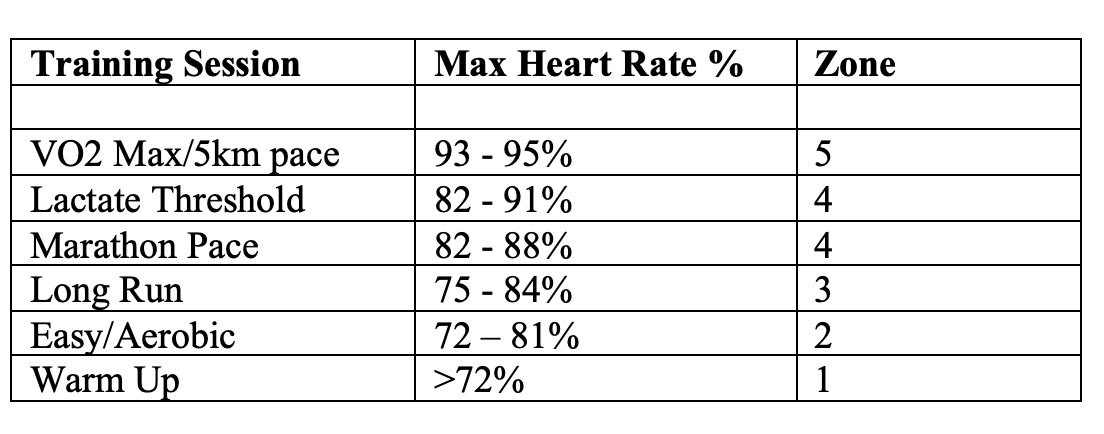Heart Rate Training
Running by Heart Rate and Running by Feel: Two Sides of the Same Coin
Improving performance is an art and a science; what works for one runner may not work for another; we are all unique and finding your rhythm takes time.
Training and running on “feel” and training and running using a calculated Target Heart Rate range are two training methods that fully complement one another, the Art, and the Science; the science is about managing the physiological aspect of running and the art is the human element.
Run on the beat of your heart
The human body has an in-built system to measure your exercise/running intensity – which is your heart. Your heart rate will increase in proportion to the intensity of your run. As the effort of a run starts to increase, your heart rate increases in response. Training by heart rate is a way of checking how much effort and intensity you’re putting into your training session. It also aids keeping you in check on easy days when your heart rate should be low.
Table 1
Heart Rate Intensities for Training Sessions
How?
Maximum heart rate is the fastest that your heart will beat during maximum effort running. There are many formulas for estimating maximum heart rate, this formula is the most accurate (Robergs and Landweher 2002) 206 minus .7 times your age. As an example, using this formula, as a 54-year-old female my predicted Maximum Heart Rate is 168.2 [206 – (.7 x 54)].
The intensity ranges in Table 1 are approximate and caution should be advised as a multitude of factors can impact the reliability of your heart rate and your heart rate monitor. Because each day is different and other variables can influence your heart rate when running, it’s important to remember that sometimes your heart rate can be high even though you feel fine. Variables that can impact your heart rate include
Heat and humidity, hydration, caffeine, alcohol or nicotine, altitude, energy levels, rest, stress and anxiety, medication and medical conditions, hormones, time of day terrain.
Running on feel
Running on feel emphasises tuning into the body's signals and adjusting your pace accordingly rather than relying solely on external metrics. By understanding your internal physical markers of what your heart is doing, you can gauge your effort and develop the skill of knowing the intensity of the effort you are running in.
A simple test to measure intensity is known as the “talk test”. If you can talk in full sentences, you’re probably in the Aerobic zone 2, if you can say 4/5 words at a time, you’re probably in the Lactic Threshold zone 4 and if you can only say one or two words, you’re probably in the Anaerobic zone which is 5.
The Magic Three
Training and running by heart rate and by feel share the common objective of understanding and managing our energy output; the ability to develop and gauge effort levels by heart rate, coupled with finely-tune our perception of effort through running by feel. And it’s by balancing this objective science of heart rate with the subjective intuition of body awareness, that we can unlock our full potential and achieve our goals.
–






